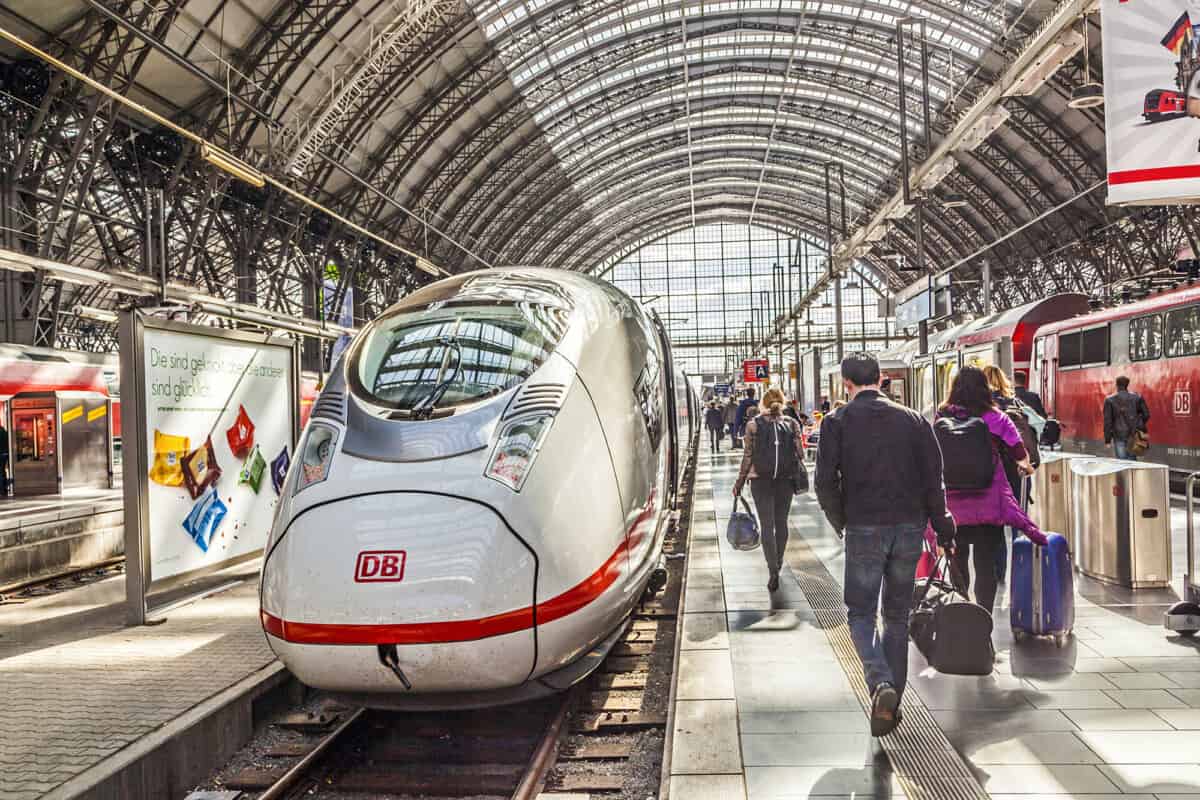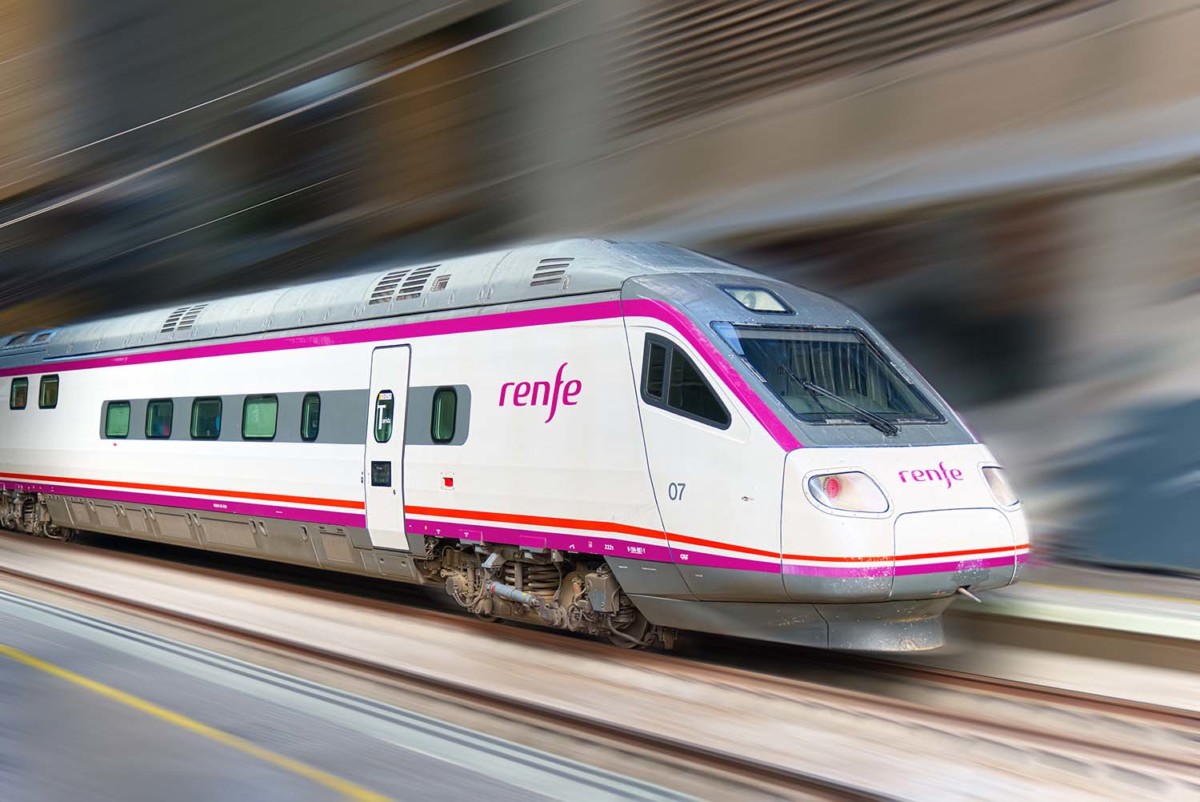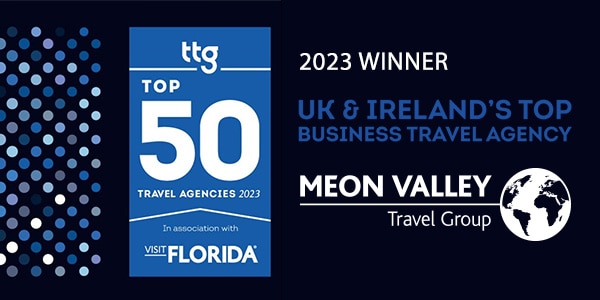Sustainable Business Travel
At Meon Valley Travel, we want to to enable the world to go on travelling, to meet in-person, to experience different cultures and to learn new and more productive ways to do business in a way that can, with time and the participation of our clients, create a more climate positive future for us all.


For Clients
Through Meon’s partnership with Trees4Travel we offer a simple and effective solution whereby the emissions relating to any air, rail, hotel and car hire travel we book can be captured, reported, and then compensated through reforestation projects where every tree is also backed up with United Nations Renewable Energy Carbon Credits.
At Meon we are fully committed to mitigating ours and the travel industry’s environmental impact and enabling you to help achieve yours too.
Free Sustainable Travel Policy Template
Looking to implement a sustainable travel policy? Don’t know where to start? Download our free sustainable travel policy template.
Fill out the form below to receive the Sustainable Travel Policy Template:

Meon Valley Travel’s Commitment To Net Zero
At Meon we have decided to take the net zero approach, mitigating 95% of our carbon footprint by not creating it in the first place. We’ve chosen to follow the GHG Protocol Corporate Accounting and Reporting Standard that supports the Government’s Science Based Target Initiative. Net zero is a 3 Scope process and by Scope 2 we hit the 95% carbon free badge of honour. We are working on it.
Scope 3 is when all of our supply chain is also net zero. That’s a more significant challenge because it will then come down to the big things like fuel and small things we have no influence over like airlines sourcing in-flight products from across the globe when they can find perfectly good produce nearer to home.
Meon has been carbon neutral since Christmas 2022, but it will take a bit longer for us to achieve net zero – our aim is by 2027, but if we hurry along, we may make it by 2025.
How Many trees will i need?
London – Paris
+ 3 Hotel Nights
1 Tree
LA – Vegas
+ 2 Hotel Nights
2 Trees
New York – Cancun
+ 1 Week Villa Rental
6 Trees
CO2 Emissions
Find out how the CO2 emissions in our reporting tool are calculated.
Frequently Asked Questions
Carbon offsets are essentially credits representing a tonne of CO2 (or equivalent) kept out of or removed from the atmosphere. By buying these credits, your company essentially “compensates” for the emissions generated by your business travel.
Protection offsets, a unique approach to tackling travel emissions by safeguarding existing natural carbon-capturing heroes like forests and peatlands.
Instead of planting new trees (the usual offsetting path), protection offsets focus on preventing the loss of valuable existing trees and ecosystems. They do this by ensuring areas with high carbon storage potential get the protection they need, like anti-deforestation patrols or sustainable management practices. This stops future emissions from entering the atmosphere, emissions that otherwise might have been released if not for your investment.
Tired of simply offsetting your business travel emissions? Dive into the world of reduction offsets, a proactive approach that tackles the problem at its source! Think of it as trading in your gas-guzzling rental car for a shiny electric one – but on a larger scale.
Reduction offsets focus on replacing existing carbon-hungry infrastructure with renewable alternatives. Imagine swapping those wood-burning stoves in remote villages your project visits for solar-powered ovens, or powering your conference venue with a trusty wind turbine instead of a rumbling diesel generator. The key is to prevent future emissions that would have occurred without your intervention.
Like “protection” offsets, calculating the climate benefit hinges on predicting the emissions avoided by these upgrades. The good news? This often translates to more direct and measurable emission reductions compared to other offset types. You see the impact, you feel the difference.
Forget simply balancing out your flight miles, it’s time to actively clean the air with carbon removal, the newest addition to your sustainable travel toolkit. Think of it as vacuuming the CO2 directly from the atmosphere and locking it away, giving you cleaner skies and happier planets.
But, just like choosing the perfect hotel, different removal methods come with their own quirks and price tags. Here’s what you need to know to navigate this exciting new frontier:
- Fast Track vs. Slow Burn: Planting trees can take decades to capture the ton of carbon you “bought,” while “direct air capture” slurps it up in no time. But speed comes at a cost – think sky-high prices for these cutting-edge technologies.
- Forever Locked Away vs. Temporary Fix: Some methods, like storing in mineral formations, keep the carbon trapped for good. Others, like tree planting, rely on the trees’ continued health, making them less permanent.
- Verification Matters: Before jumping in, check the science and legal backing of the removal method. Trustworthy verification is key to ensuring your investment truly cleans the air.
So, is carbon removal a good fit for your business travel strategy?
- Pros: Actively cleans the atmosphere, offering measurable impact and a future-proof approach.
- Cons: Prices can be high, and choosing the right method requires careful research and evaluation.
The bottom line? Carbon removal adds a powerful option to your sustainable travel arsenal. But while it’s tempting to jump on the fastest, flashiest method, remember: research, verify, and combine it with responsible travel choices like train bookings or carbon-neutral airlines to maximize your environmental impact.
Embrace the future of clean air, travel thoughtfully, and watch your business journeys not only reach their destination, but also contribute to a cleaner, healthier planet for everyone.
Confused about “carbon credits” versus “offsets” for your business travel? You’re not alone! While often used interchangeably, there’s a key difference:
Carbon credit: Imagine it as a tradable permission slip to emit. Governments or industries may set emission limits (“allowances”). Companies exceeding their allowance can buy these credits from those under their limit, essentially “borrowing” their emission rights. Similarly, excess offset purchases can be resold.
Carbon offset: Think of it as a “green investment” to balance out emitted carbon. You buy “offsets” representing carbon dioxide (or its equivalent) removed from the atmosphere, typically through projects like renewable energy or forest conservation. This helps “compensate” for your own emissions.
So, which applies to your business travel?
- Carbon credits: If your company operates in a regulated market with emission allowances, you might encounter carbon credits, allowing you to buy or sell emission rights directly.
- Carbon offsets: More likely applicable to your travel emissions. Offsets help you “balance out” the CO2 released from flights, train journeys, or car rentals, essentially neutralising your environmental impact.
Remember, both tools help manage your carbon footprint, but in different ways. Choose wisely based on your specific needs and regulations.
Hold on to your boarding passes, business travelers! “Carbon neutral” – that catchy phrase – is getting grounded due to concerns about greenwashing and inconsistencies. But fear not, eco-conscious explorers, let’s navigate this new terrain:
Why the buzz kill?
Saying you’re “carbon neutral” is like claiming your hotel has “a view” without specifying it’s of a dumpster or the Eiffel Tower. The term often relies on a mix of offsets and credits with varying environmental impact and costs. This lack of clarity fuels doubt and opens the door for greenwashing, making responsible travelers raise an eyebrow.
So, what’s the alternative?
Think “emission reduction” as your new travel mantra. Focus on actively minimising your carbon footprint through concrete actions like:
- Travel smarter: Opt for train journeys, carbon-neutral airlines, or video conferencing when possible.
- Stay green: Choose hotels with strong sustainability practices and minimize energy consumption in your room.
- Offset consciously: If offsets are necessary, prioritize high-quality, verified projects with clear impact measurements. Remember, offsets are supplements, not replacements for reducing emissions.
The bottom line:
Forging a truly sustainable travel path goes beyond buzzwords. Embrace transparency, prioritise reduction, and invest in high-quality offsets when needed. By making informed choices, you can ensure your business travel not only reaches its destination but also paves the way for a greener journey for everyone.
Ever booked a flight, rented a car, or stayed in a hotel for work? Those seemingly simple travel decisions cast a wider environmental net than you might think, thanks to Scope 3 emissions.
Think of Scope 3 as the carbon footprint shadows of your business travel. It includes all the indirect emissions generated throughout your trip, even those you don’t directly control:
- Airline emissions: The CO2 released by your plane journey.
- Car rentals and taxis: The fuel consumed by your ground transportation.
- Hotel energy: The electricity and heating used by your accommodation.
- Food and beverages: The emissions associated with producing and transporting the meals you consume.
Why care about Scope 3?
Ignoring these hidden footprints can paint an incomplete picture of your company’s environmental impact. Tracking and reducing Scope 3 emissions shows a commitment to true sustainability and opens doors to:
- Meeting future regulations: Many countries are starting to implement mandatory reporting and reduction targets for Scope 3 emissions.
- Boosting brand reputation: Consumers are increasingly conscious of companies’ environmental practices. Demonstrating your commitment to reducing Scope 3 emissions can give your brand a competitive edge.
- Enhancing operational efficiency: Analyzing Scope 3 emissions can identify hidden inefficiencies and opportunities for cost savings in your travel practices.
Taking control of your Scope 3 travel footprint:
- Choose wisely: Opt for airlines with sustainable practices, book direct flights to minimize layovers, and select fuel-efficient rental vehicles.
- Stay green: Choose eco-certified hotels with energy-saving initiatives, minimize laundry requests, and reduce food waste.
- Offset responsibly: If unavoidable, choose high-quality, verified carbon offsets for your travel emissions. Remember, offsetting is one piece of the puzzle, not a replacement for reducing emissions.
By acknowledging and tackling your Scope 3 travel emissions, you embark on a journey towards a more sustainable future, one business trip at a time. Remember, every step you take, every flight you choose, every hotel you stay in, matters. Let’s travel with purpose and pave the way for a cleaner, greener planet.
Forget “neutralising” impact – think actively eliminating it. Enter Net Zero, the ultimate destination for responsible business travel. It’s about balancing the emissions you generate with permanent and verified reductions elsewhere. Imagine planting enough trees to suck up all the CO2 your flights release, except on a much larger, measurable scale.
Why target Net Zero for business travel?
- Minimise climate impact: Net Zero goes beyond simply offsetting; it actively removes carbon from the atmosphere, contributing to a healthier planet.
- Future-proof your business: As regulations and consumer expectations shift towards carbon neutrality, embracing Net Zero shows your commitment to long-term environmental leadership.
- Boost brand reputation: Consumers are increasingly drawn to companies with strong sustainability practices. Net Zero can give you a competitive edge and attract eco-conscious clients and talent.
Charting your Net Zero business travel course:
- Measure and track: Accurately measure your total business travel emissions to understand your starting point.
- Reduce relentlessly: Prioritize reducing emissions at the source through choices like video conferencing, carbon-neutral airlines, and fuel-efficient transportation.
- Offset responsibly: If you can’t avoid emissions, choose high-quality, verified carbon removal projects that permanently remove CO2 from the atmosphere.
- Advocate and collaborate: Share your Net Zero goals with partners and suppliers, encouraging collective action towards a more sustainable future.
Remember, Net Zero is not a race, it’s a journey. Every step you take, every eco-conscious travel choice you make, and every sustainable partnership you forge, brings you closer to your destination.
Learn More About Meon’s Sustainability Tools and Solutions
Together we can help save the planet.





